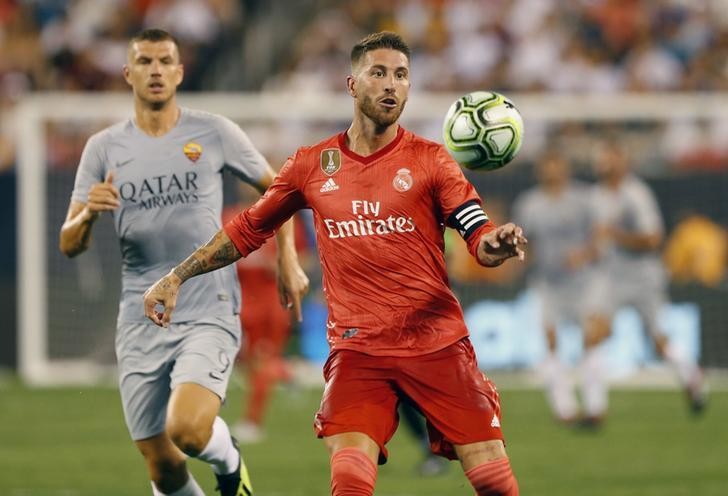Real Madrid’s new football shirt is garbage - in a good way

Plastic fantastic ... football clubs across Europe are sporting recycled ocean pollution. Image: Noah K. Murray-USA TODAY Sports via Reuters
Real Madrid regularly hits the headlines for stellar performances on the pitch. But this time the club is in the news for helping to bring attention to one of the biggest environmental challenges of our time.
The club, one of the biggest and most successful football teams in the world, has unveiled a new third strip which features a jersey made from waste plastic recovered from the sea. The shirt has been developed by Adidas and Parley, a campaign group working to stop waste plastic getting into the oceans.
The partnership has created ocean plastic kits for Bayern Munich, Juventus and Manchester United, as well as Real Madrid. Plus, to mark Earth Day 2018, every team in the US Major Soccer League wore one of the Adidas Parley for the Oceans shirts. The two organizations have also collaborated on a range of sports shoes, swimwear and other items.
Environment 1-0 Plastic
While Juventus and Manchester United have opted for serious-looking dark grey and royal blue respectively, the German and Spanish clubs have chosen more eye-catching colours. For Bayern Munich, there is a bright red shirt, while Real Madrid play in coral pink, which was selected, according to the club, to highlight the damage being done to coral reefs.
It may even turn out to be a good omen for the club, and hopefully for the oceans too, as Real Madrid beat Roma 2-1, playing in an International Champions Cup match at the Metlife Stadium in New Jersey, USA on 7 August while wearing the new strip for the first time.

Sportswear giant Nike is involved in a similar project. The company has made shirts from waste plastic for FC Barcelona and the national soccer teams of Australia, South Korea, and Saudi Arabia. Nike says a minimum of 12 recycled plastic bottles are used in the manufacture of its football shirts
According to Greenpeace – 12.7 million tonnes of plastic are dumped in the ocean every year. With some of the biggest names in world football running out to play dressed in recycled ocean plastic, it’s hoped millions of people will think twice about where their waste plastic ends up when they have finished with it.
Green goals
Football clubs aren’t just making their shirts greener.
Amsterdam’s Johan Cruijff Arena can now store 3 megawatts of power, thanks to a giant new energy storage system - including new and used electric vehicle batteries.

It’s designed to provide power to the stadium during outages or periods of high use. But, during periods of lower demand the stadium will also contribute to the Dutch national grid.
Don't miss any update on this topic
Create a free account and access your personalized content collection with our latest publications and analyses.
License and Republishing
World Economic Forum articles may be republished in accordance with the Creative Commons Attribution-NonCommercial-NoDerivatives 4.0 International Public License, and in accordance with our Terms of Use.
The views expressed in this article are those of the author alone and not the World Economic Forum.
Stay up to date:
Future of the Environment
Related topics:
Forum Stories newsletter
Bringing you weekly curated insights and analysis on the global issues that matter.
More on Nature and BiodiversitySee all
Dr Gideon Lapidoth and Madeleine North
November 17, 2025






